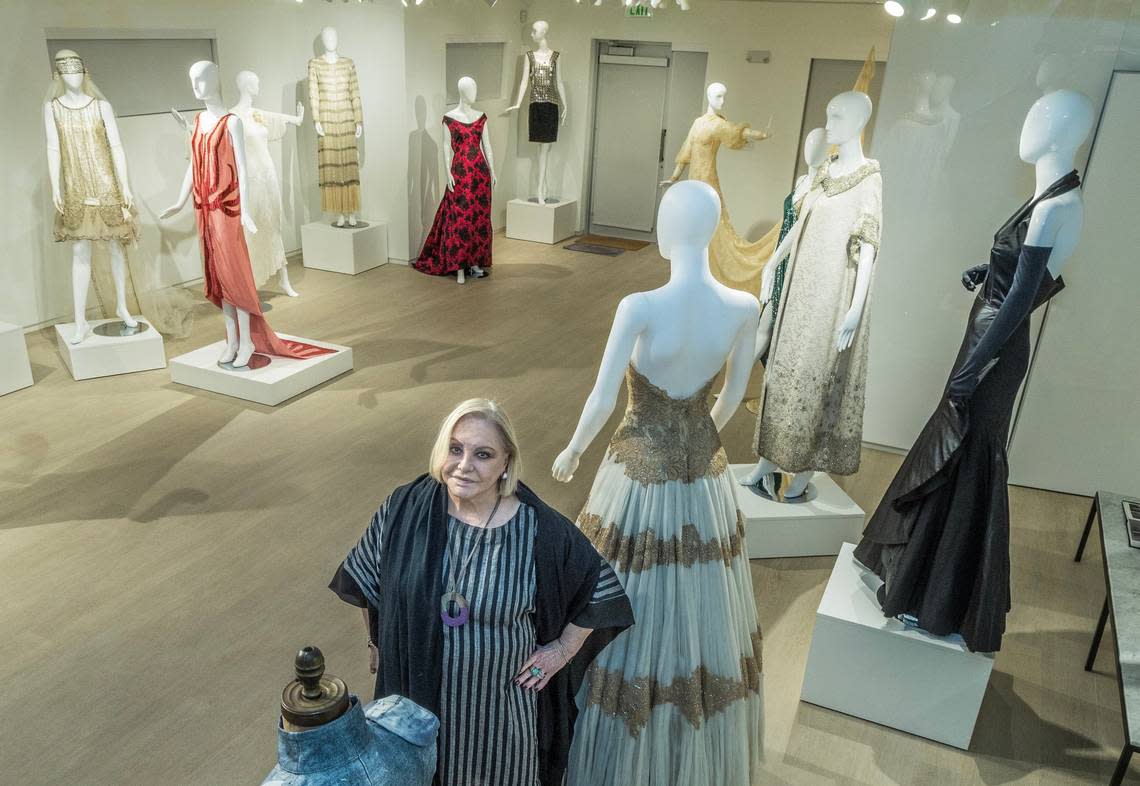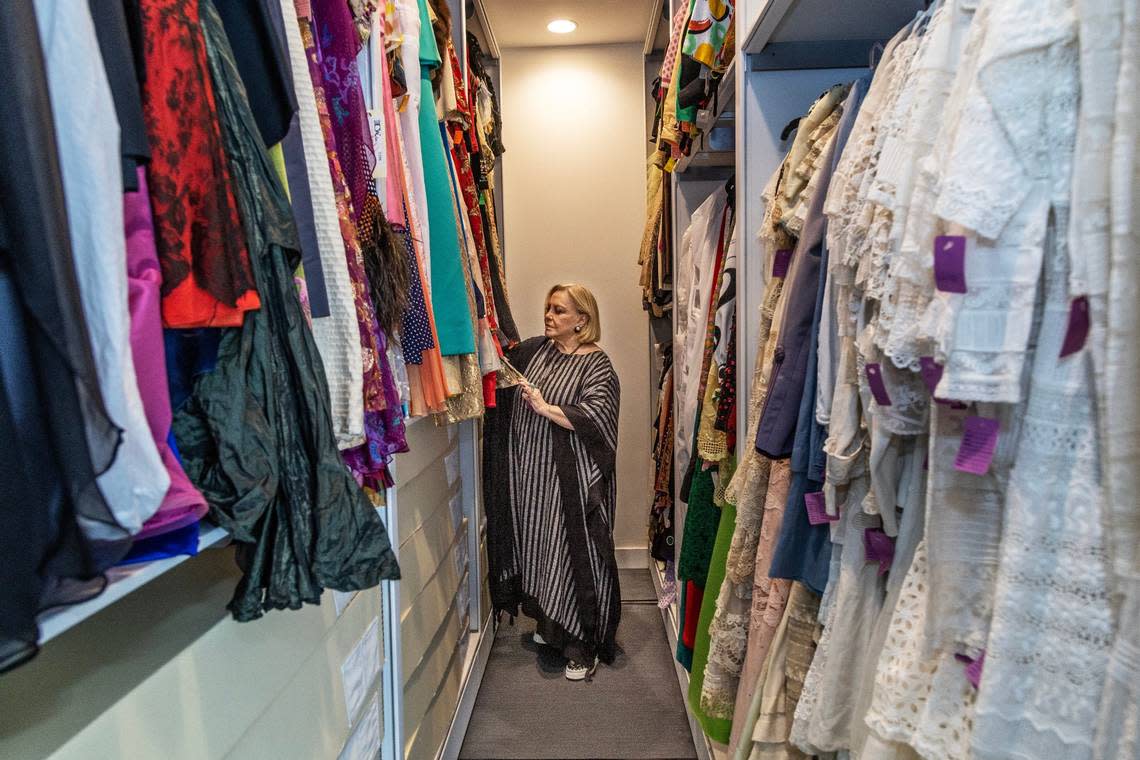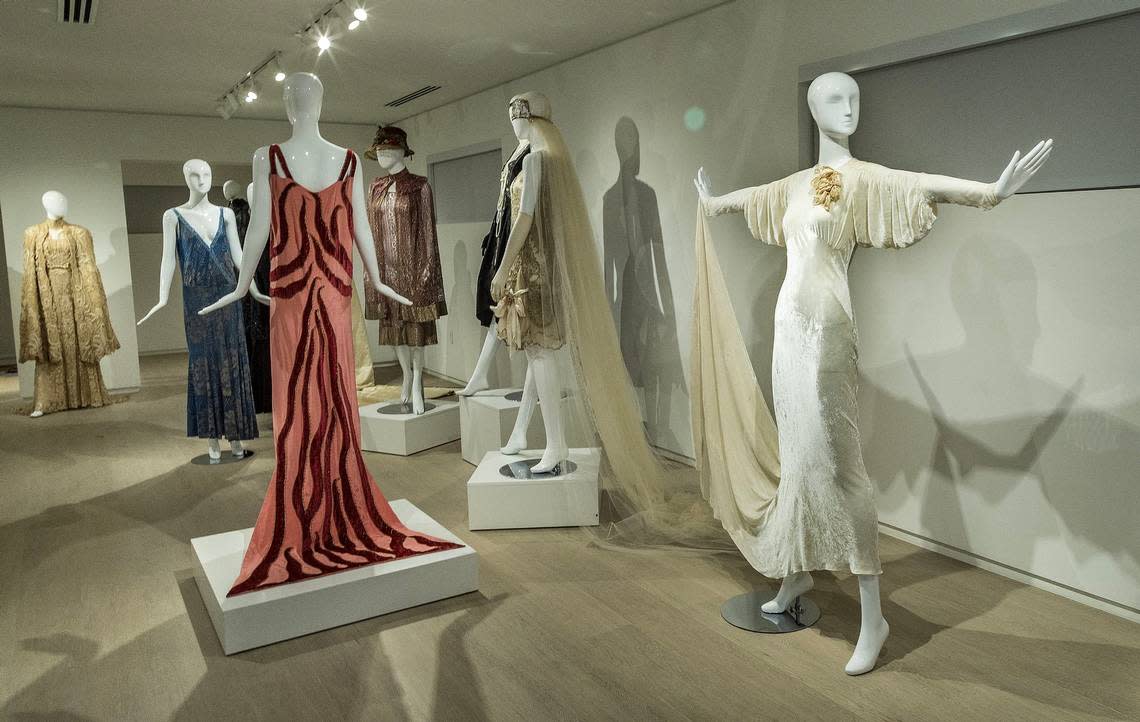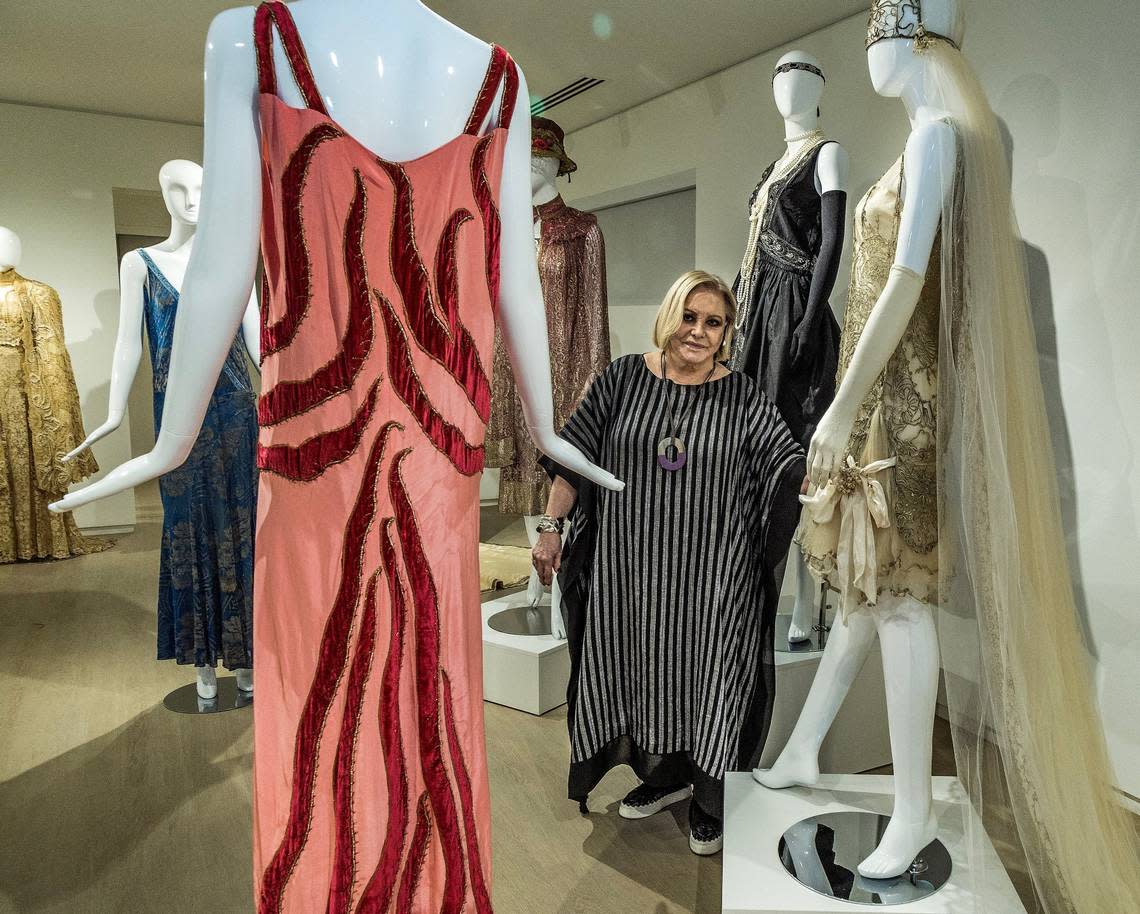Meet the woman who preserves 100 years of fashion history from this house in Miami
Among orchids and vines hanging from the trees in the backyard of a 1920s house in Wynwood lies a hidden treasure in Miami. Paquita Parodi leads us through the patio to a gallery that holds the Parodi Costume Collection, more than 5,000 garments and accessories that offers a journey through 100 years of fashion history and highlights from the work of the best designers in the world.
The Madrid native sports a a tunic that is the first hint at her passion for fashion. Paquita has restored thousands of old costumes, an art she learned from her grandmother and the nuns at school who taught her to love lace and fabrics. It’s a passion she continues to develop with her son Gonzalo Parodi, a true connoisseur of the history of fashion.
Inside the house, a Bauhaus-style building, there are pieces from the Victorian and Edwardian era, dresses by Madame Vionnet, Paul Poiret, Mariano Fortuny, Elsa Schiaparelli, Christian Dior, Oscar de la Renta, Paco Rabanne, and 60 pieces by Venezuelan designer Carolina Herrera.
They also have several samples of the work of Venezuelan designer Angel Sánchez, to whom they dedicated an exhibition in 2022 for his 35-year career. One of his pieces was donated to the collection, which is open to the public by appointment.
“This is not a museum in the sense of the MET,” says Gonzalo, who was born in Spain, grew up in Venezuela and is involved with the collection and the important role it plays in a cosmopolitan city like Miami, which has become an important place for the arts thanks to Art Basel and Miami Art Week.

“It works more like a kind of library, like an archive to sit and think, to educate, to do something that Miami needs, to create this sense of origination of thought that gives it weight in the world of fashion, not only to create beautiful things but to think about them,” he says.
From the first room, you can see that the curation is not based on chronology — it is thematically arranged to explore relationships, comparisons, connections.
Providing this kind of context for fashion history is one of the important roles of the Parodi Costume Collection, which is available to Miami students from design schools such as the Design and Architecture Senior High (DASH) and the Marangoni Institute, in the Miami Design District, just a few blocks from the collection.
A fashion archive
Most of the collection is not on display but is stored in warehouses, high maintenance for the small team. The pieces are rotated in the exhibition rooms, giving visitors and students the opportunity to discover new pieces each time.
“I have 400 dresses from the 1920s alone,” says Paquita, who takes pride in her work she as a restorer of antique pieces.
In a large transparent cabinet in her workshop you can see the delicate tools that Paquita uses to restore the garments, including a collection of children’s clothing from the Victorian era to the 1950s.
“I have never rented them, I am terrified that they are going to ruin them,” says Paquita when she is asked if she rents the magnificent costumes for film productions. She proudly shows off delicate lace, pleats, beadwork, sequins, even metals that dazzle and enchant.
The collection is like a time capsule: An Elsa Schiaparelli dress from 1930; black and white pieces from Carolina Herrera; a white dress with gold details by Italian designer Fernanda Gattinoni that was worn by actress Sophia Loren; a black taffeta suit designed by Spanish couturier Cristóbal Balenciaga in 1956, worn by Mexican actress Dolores del Río.

“We don’t waste anything,” says Gonzalo. “We believe in recycling and upcycling in fashion.”
The costumes that Paquita cannot restore, she dismantles and uses their parts to fix other pieces.
On the tour you can appreciate Paquita’s knowledge, as she lovingly explains the value of the pieces.
“I’m trying to get them to come learn so that these students can, in turn, teach others,” she says of the group of students she frequently hosts. “That’s what I would like most, the return of the spirit of not throwing anything away, of fixing it, of making it perfect.”
A treasure trove of Miami fashion history
“This is the effort of a person who over the years evolved as a collector, restorer and expert and gained more experience and when she found treasures, she had to evaluate their condition, and if in fact they could be rescued,” explains Gonzalo about his mother’s work.
Paquita developed an “archaeological methodology” with respect to clothing, helping her amass the large collection. Like all collections, said Gonzalo, his mother’s may consist of 10-15% irreplaceable, museum-worthy pieces that are of great historical importance.
“The rest are pieces that represent an era and its designers, but they do not have a key importance,” he points out.

The building where the collection is located is from the era that the majority of its pieces were created, the 1920s, an important decade in Miami history.
For years the house was a psychiatrist’s office. The Parodi family acquired it in 1998, thinking of making it Paquita’s workshop. It was a shrewd decision, as they bought the house long before Wynwood became an arts hub. They remodeled the space in 2010, and the collection entered in 2013.
The 1920s was a decade of radical changes in women’s rights, and fashion reflects those changes, Gonzalo and Paquita say, showing how the silhouettes shifted, skirts became shorter.
The ‘20s is also an important decade for Miami’s growth as a city. Developers sell it as a kind of “Little Venice” and northern tourists soon discover it. The Biltmore Hotel and the Freedom Tower are built.
“There is a resonance between the spirit of the collection and the geography in which we are trying to grow it,” says Gonzalo, explaining that when the students come, they try to make that connection, to get them to imagine the people dressed in those outfits from the 1920s at parties or events in those now iconic historic buildings in Miami.

The collection collaborates with other museums and institutions dedicated to fashion, such as the Balenciaga Foundation in Getaria, Basque Country.
“We want this to be a space that invites private collectors who have not shown their collections to share them,” says Gonzalo.
Their desire is for the Parodi Costume Collection to function like other private art collections in Miami on display in nearby spaces, such as the Rubell Museum and The Margulies Collection.
“Today the city is in a better position by having this archive,” said Gonzalo. “We would like to grow with the help of the city and its residents, so it becomes an important regional center for fashion.”
Parodi Costume Collection
Address: 276 NE 27th St., Miami
By appointment only: appointments@parodicostumecollection.com or www.parodicostumecollection.
